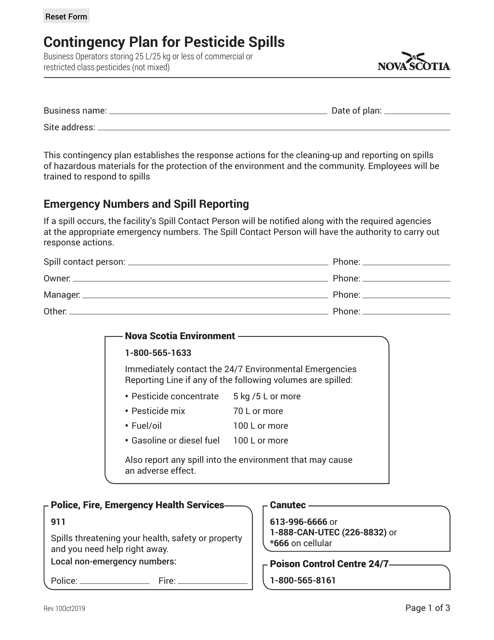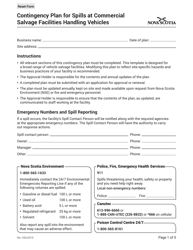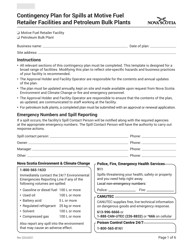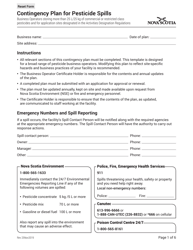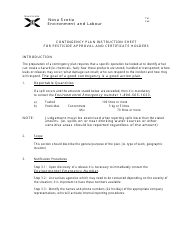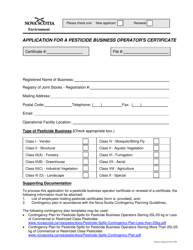Contingency Plan Template for Pesticide Spills for Business Operators With 25 L / Kg or Less - Nova Scotia, Canada
The Contingency Plan Template for Pesticide Spills is designed to assist business operators in Nova Scotia, Canada who work with pesticides weighing 25 L/Kg or less. The purpose of this template is to help these operators create a plan to effectively respond to pesticide spills and minimize any potential environmental or health risks that may arise as a result.
The Contingency Plan Template for Pesticide Spills for Business Operators with 25 L/Kg or Less in Nova Scotia, Canada is filed by the individual business operators themselves.
FAQ
Q: What is a contingency plan for pesticide spills?
A: A contingency plan for pesticide spills is a plan that outlines the steps to be taken in case of a pesticide spill to minimize harm to human health and the environment.
Q: Who needs a contingency plan for pesticide spills in Nova Scotia?
A: Business operators with 25 L/Kg or less of pesticides in Nova Scotia need to have a contingency plan for pesticide spills.
Q: What should be included in a contingency plan for pesticide spills?
A: A contingency plan for pesticide spills should include a description of the pesticides on site, spill response procedures, contact information for relevant authorities, and provisions for training and drills.
Q: Why is a contingency plan for pesticide spills important?
A: A contingency plan for pesticide spills is important because it helps prevent and minimize the potential risks and damage associated with pesticide spills, protecting human health and the environment.
Q: How often should a contingency plan for pesticide spills be reviewed and updated?
A: A contingency plan for pesticide spills should be reviewed and updated at least once a year, or whenever there are significant changes to the pesticide inventory or site conditions.
Q: Are there any specific requirements for the content of a contingency plan for pesticide spills in Nova Scotia?
A: Yes, there are specific requirements for the content of a contingency plan for pesticide spills in Nova Scotia. These requirements include information such as pesticide identification, spill response procedures, and communication protocols.
